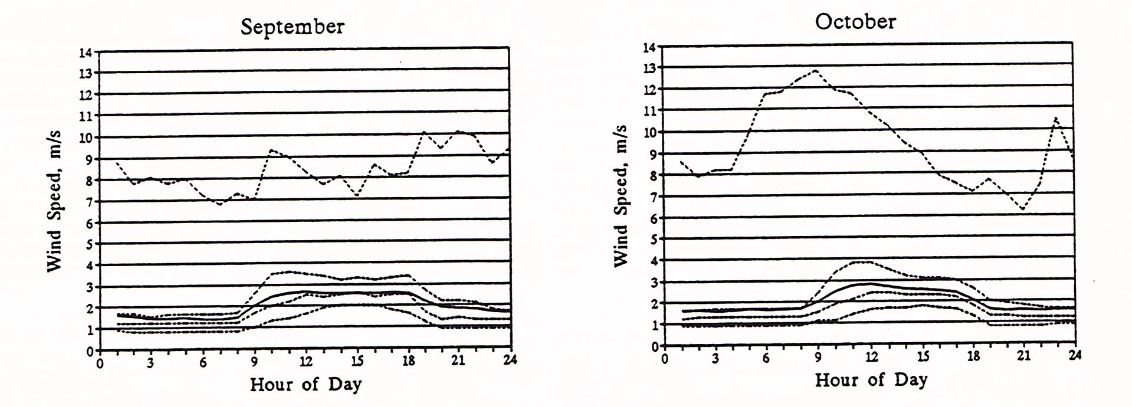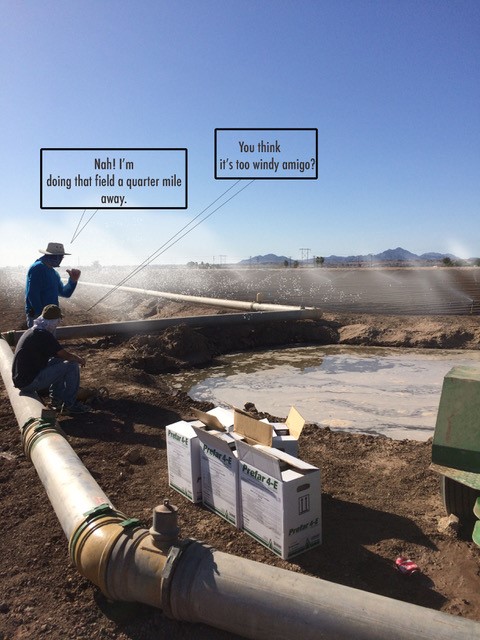
|
|
|
|

|
|||
|
|
|||
|
|
|||
Applying herbicides through sprinklers can be an effective and convenient method of applying herbicides. Some herbicides are more effective when chemigated and is it possible to make applications when fields are wet. Sprinklers are designed to apply water and may not be the most accurate and uniform method of applying pesticides. Water is applied over several hours and days and nonuniformity is masked over long periods. In general, pesticides are applied in an hour or less and nonuniformity can be significant. Wind can be a major cause of nonuniformed applications. Timing is critical and it is difficult to change schedules to avoid windy days., Based on historical data, it is possible to predict the best times to minimize the effect of wind. Paul Brown, Extension Biometerologist at the University of Arizona has summarized how best to manage chemigation applications during windy periods: |
|||
| Back | |||
|
For questions or comments on any of the topics please contact Marco Pena at the Yuma Agricultural Center.
|
|||
|
Home |
Cotton | Veggies |
Forages | Grains
| Citrus |
Crop x Crop Insects | Diseases| Weeds | Pesticides | Economics | News | Weather | Research | Photos | Contacts | General Info. Copyright © 2001 University of Arizona, College of Agriculture and Life Sciences Webmaster: Al Fournier (acis@ag.arizona.edu) |
|||


